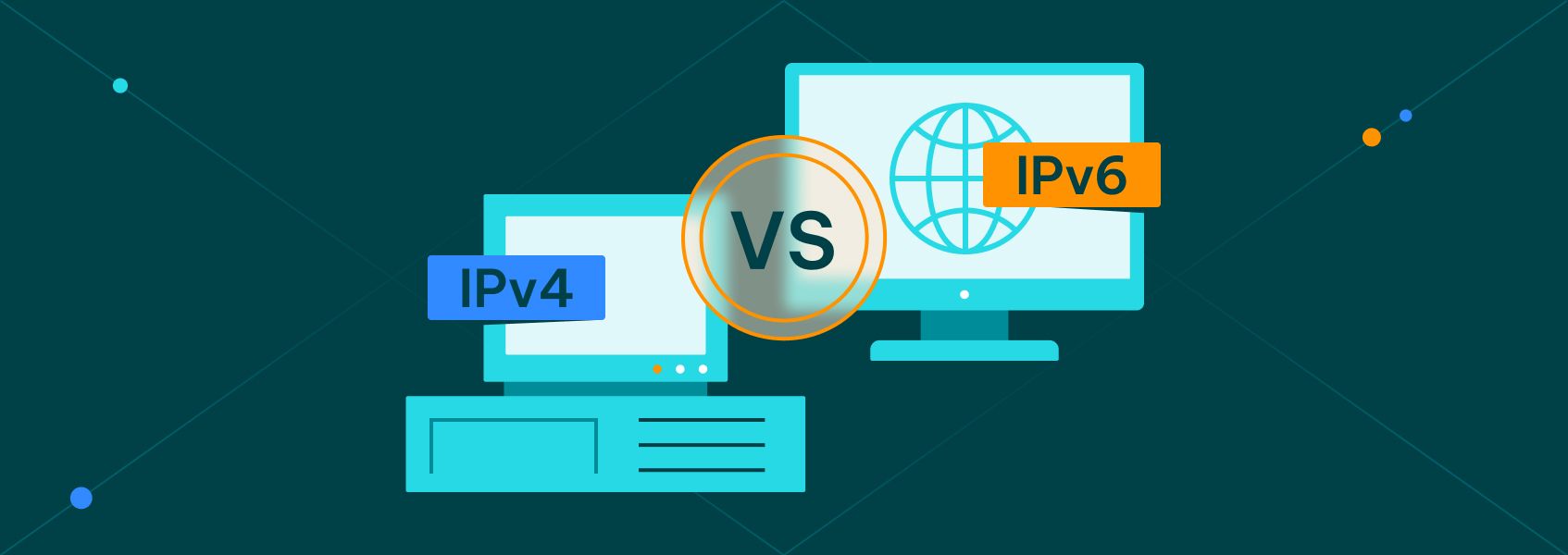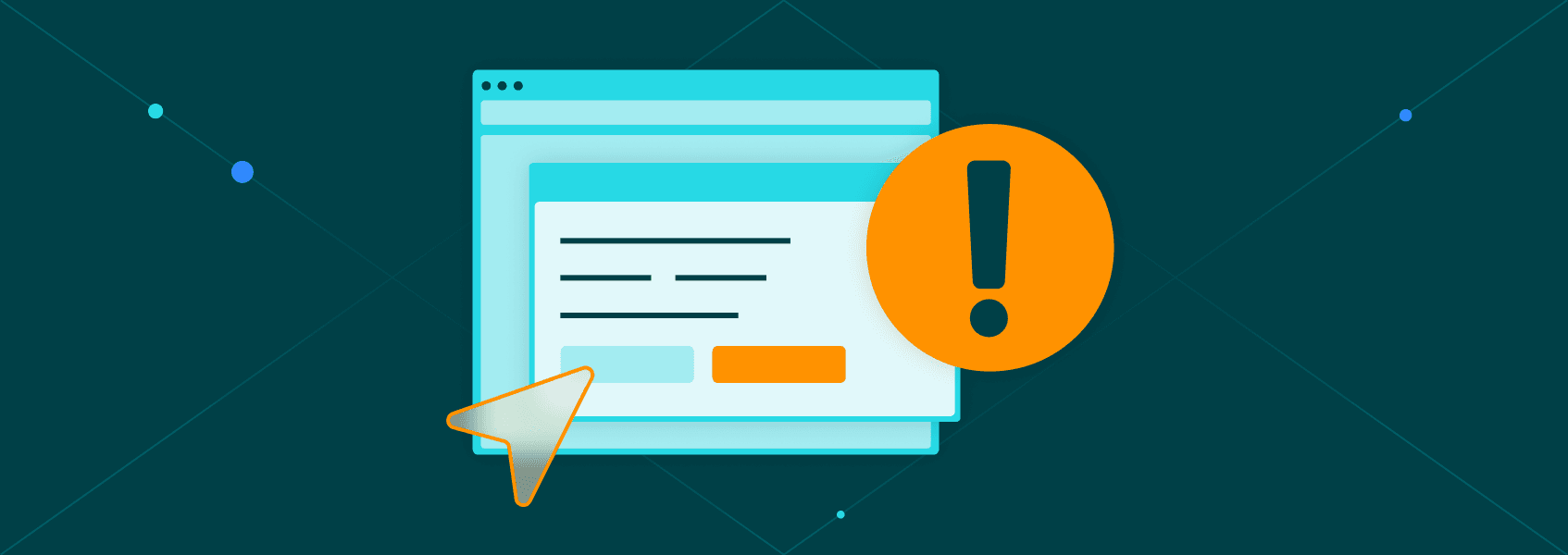IPv4 vs. IPv6: What is the Difference?
Proxy fundamentals

Justas Palekas
IPv4 and IPv6 are different versions of the IP addressing system. While both serve the same purpose, allowing us to connect to the internet and share data across networks, they differ in how their addresses are structured and used.
So what exactly sets IPv4 and IPv6 apart, and what does it mean when it comes to proxies? Let’s start from the very beginning and explain what an IP address is before going into the details.
What Is an IP Address and How Does It Work?
An IP address, or Internet Protocol address, is a set of numbers identifying each device connected to the internet. Aside from distinguishing your device from billions of others, it also enables communication with other devices and servers or sharing data, when combined with TCP or Transmission Control Protocol .
Here’s how it works.
When your device sends a request or information, the data is broken down into smaller blocks called packets. Each packet contains your IP address, allowing your device to connect to the target server or network. At the same time, the target can see where the request came from and exactly where to send the response.
In a nutshell, it’s how the internet works. Without IP addresses, devices won’t be able to locate each other or exchange data. You can easily find your IP address , no matter what device or OS you use.
What Is IPv4?
IPv4 is the first version of the IP address protocol. It was developed and first used in the early 1980s, so there are over 4.2 billion unique IPv4 addresses carrying most of the internet traffic.
This IP protocol version uses a 32-bit address scheme, consisting of four 8-bit numbers between 0 and 255, separated by periods.
Here’s an example of an IPv4 address that probably looks familiar:
192.201.31.6
While over 4.2 billion IPs may seem like a lot, the rapid growth of internet-connected devices quickly exhausted the available addresses. As a result, the world started turning to solutions like reusing IPs, Network Address Translation (NAT), and the development of a new IP version - IPv6.
What Is IPv6?
IPv6 is the latest version of the IP address protocol developed to solve the lack of available IPv4 addresses. It was first introduced in the late 1990s, supporting over 340 undecillion unique IPs (340 followed by 36 zeros.) That means we have a long way to go before the world runs out of IPv6 addresses.
Unlike IPv4, this version uses a 128-bit address, consisting of eight 16-bit digits separated by colons. Also, it’s an alphanumeric address, so it uses both numbers and letters.
Here’s an example of an IPv6 address:
4080:db00:0000:00ee:1257:8a2e:0db8:729c
This internet protocol is integrated into most OS, including Microsoft Windows, macOS, Linux, and Android. Many countries worldwide are advocating for IPv6 adoption to accommodate the growing number of internet-connected devices and strengthen national cybersecurity infrastructures.
What Is the Difference Between IPv4 and IPv6?
Both IPv4 and IPv6 are Internet Protocol versions designed to identify every device connected to the internet, such as computers, laptops, smartphones, tablets, and IoT network devices. They are part of the TCP/IP protocol suite, enabling data transfer across the internet. However, they are structured differently.
Here are the main differences between IPv4 and IPv6 in terms of:
Address format and length
- IPv4 uses a 32-bit IP address scheme, supports about 4.3 billion unique addresses, and is written in dot-decimal format (e.g., 192.201.31.6).
- IPv6 uses a 128-bit address scheme, supports over 340 undecillion unique IPs, and is written in hexadecimal format separated by colons (e.g., 4080:db00:0000:00ee:1257:8a2e:0db8:729c).
Packet structure
- The smallest packet size for IPv4 is 576 bytes, whereas for IPv6 it’s 1208 bytes.
- IPv4 has 12 header fields, IPv6 has 8 (simplifying packet processing).
- IPv4 includes checksum fields, while IPv6 removes them for efficiency.
Network communication features
- IPv4 supports broadcast messaging, while IPv6 replaces it with more efficient multicast and anycast.
- IPv6 supports multicasting as a core feature, while for IPv4, multicasting is an optional feature.
- IPv4 is less efficient for mobile networks due to the limited address space and routing constraints, while IPv6’s larger address space and improved routing make it a much better option for mobile devices.
Configuration
- Configuration for IPv4 is mandatory. All newly installed systems must be configured for them to connect to other systems.
- Configuration for IPv6 is optional. This allows you to configure your system depending on the function.
Protocols used
- IPv4 uses Address Resolution Protocol (ARP) to map IP addresses to MAC addresses.
- IPv6 uses Neighbor Discovery Protocol (NDP) to do the same more efficiently and securely.
Security & quality
- IPsec is optional for IPv4, while for IPv6, it’s built in for authentication and encryption.
- IPv6 includes built-in Quality of Service (via the Flow Label field), while IPv4 lacks a native QoS mechanism.
NAT & connectivity
- IPv4 relies on Network Address Translation (NAT) because of address shortages.
- IPv6 eliminates the need for NAT, enabling end-to-end connectivity at the IP layer.
What Are IPv4 and IPv6 Proxies?
IPv4 proxies are proxy servers that use IPv4 addresses, whereas IPv6 proxies are servers carrying IPv6 addresses. Both types of proxies have the same function - to hide your real IP address and improve your online privacy.
They work by taking your web requests, analyzing them, and sending them to the target server via their own IP address. When the target server receives the request, it sees the proxy’s IP as the source, sending the response back to it. The proxy then forwards the response back to you, working as a middleman.
Since the target server can’t see your original IP address, you can browse anonymously.
What’s the Difference Between IPv4 and IPv6 Proxies?
Both types of proxies serve the same purpose - using their own IP addresses to connect you to target servers and networks and providing you with anonymity.
However, IPv4 proxies use 32-bit IP addresses written in dot-decimal format while IPv6 proxies use 128-bit IPs written in hexadecimal format, separated by colons. This means IPv6 is capable of providing over 340 undecillion IP addresses, which is probably more than we’ll ever need in the foreseeable future.
The built-in IPsec and Quality of Service in IPv6 make IPv6 proxies superior when it comes to security and quality.
While proxy speed depends on several factors, including the network infrastructure, IPv6 proxies tend to be faster. That’s because they avoid the bottlenecks caused by the lack of IPv4 addresses and eliminate the need for translation mechanisms like NAT.
Also, IPv6 proxies support the translation of IPv4 into IPv6 addresses. This means users with IPv4 connections or devices can seamlessly connect to websites hosted on IPv6 servers.
In terms of pricing, IPv6 proxies are generally more affordable than IPv4 proxies. This doesn’t mean they are less effective, but you have to choose a reliable IPv6 proxy provider like IPRoyal to ensure they are of the highest quality.
Why Do You Need to Use IPv6 Proxies?
Reliable IPv6 proxies tend to be faster, less expensive, and more secure than IPv4 proxies. With an almost infinite pool of unique IPs, IPv6 is the future of the internet, so more and more websites and services are adopting it.
This is why using IPv6 proxies now will help you enjoy seamless compatibility and improved performance across your operations. On top of that, IPv6 proxies can translate traffic between IPv4 and IPv6, so you can still communicate seamlessly with networks that use IPv4.
Here are some of the most common use cases of IPv6 proxies:
- Managing multiple social media accounts with unique IPs for minimum risk of bans
- Accessing geo-blocked content without being detected
- Web scraping with a large pool of different IPv6 addresses for smooth operations
How to Choose the Best IPv6 Proxies?
Premium providers like IPRoyal offer fast and reliable IPv6 proxies you can count on. You can choose from IPv6 residential proxies in over 195 locations, offering the highest level of trustworthiness and geo-targeting down to the city level.
However, make sure you avoid free providers. Free IPv6 proxies may lead to sluggish connections, data leakage, and IP bans.
Final Thoughts
IPv4 and IPv6 addresses have the same function, but IPv6 offers a much larger address space, improved efficiency, stronger security, and better support for modern internet needs. While IPv4 is still widely used today, the worldwide internet is moving toward IPv6 to keep up with the growing number of connected devices.
This makes IPv6 proxies superior to IPv4, providing the compatibility and performance you need while costing less. Contact us today and let us help you design the best IPv6 proxy architecture for your use case.


